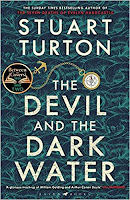There are several things to like about this book. To start off with, the chapter titles. Titles such as “A Man Called Ove Buys a Computer That is Not a Computer” cannot but fail to bring a smile to the reader’s lips. Two, the writing style. Backman writes simply (despite the fact that flashbacks are interspersed with the present narrative) and humorously. While I read the English translation of the original Swedish book, the reading pleasure was not diminished one bit. And finally, the bitter-sweet and heart-warming aspect of the book. The main characters are well fleshed out and despite their shortcomings, one tends to root for them.
The book is the story of, of course, a man called Ove. He’s 59, extremely grumpy, hates change, has lost his job because of age, and is uncomfortable with modern technology, bureaucrats, and even coffee machines. He hates people who trade their Swedish cars for an Audi or a BMW. But Ove has several redeeming characteristics too. He is honest as when he returns a lost wallet at the age of 9, he has high principles and sticks to them, and has abiding love for his wife, Sonja. Mainly, while he will never admit it, he has a soft heart as shown by his interactions with his Iranian neighbour Parveneh and her children, with his friend turned foe Rune, with some local youth, and with a cat that he has been made to adopt.
This book is somewhat similar to The Rosie Project (which was published a year later) – it’s about a slightly dysfunctional man and his wife who are poles apart, and the gradual changes brought about in him. The one issue I had about the book though was that it was a bit too trite. Backman tries to tick a lot of boxes for Ove including his acceptance of foreigners and homosexuality and the ending is a bit too glib with all the pieces falling neatly in place. And like The Rosie Project, it does get soppy at times.
An enjoyable sidenote is the blog that catapulted Backman to fame well before his books did. It’s a humorous and wry complaint and is a poignant take on parenting. You can find it here: https://community.babycentre.co.uk/post/a14203785/i_loved_this_piece_of_writing_from_a_dad_blog
Pros: Funny and well-written, heart-warming, lovely chapter titles
Cons: A bit trite and soppy



























